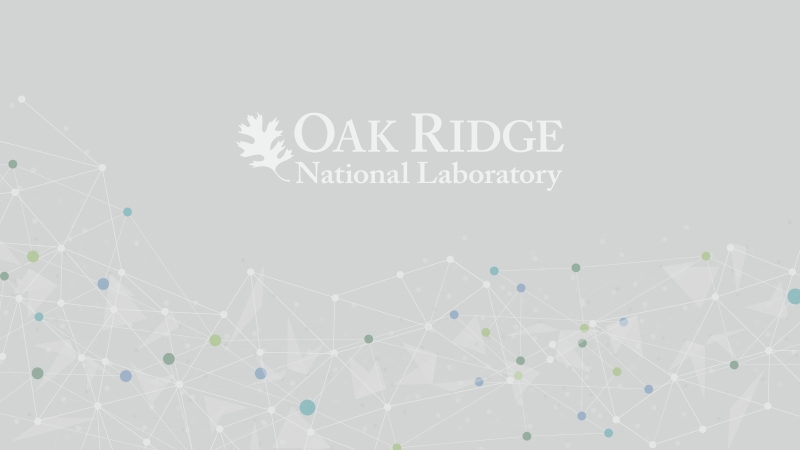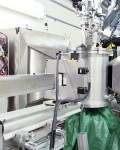Materials behave differently under pressure—a principle that can be exploited to help answer complex questions that are relevant for a number of areas: developing new super-hard materials, studying the composition of the icy moons of Saturn, understanding the propagation of earthquakes, or gaining insight into the development of magnetism. To bring the long-term goals in these areas closer to reality, Oak Ridge National Laboratory (ORNL), home of the Spallation Neutron Source (SNS) and the High Flux Isotope Reactor, is hosting a workshop on June 3-5 to explore new and established techniques for studying materials at high-pressures using neutron scattering: New Directions for High-Pressure Neutron Research.
Scientists can use high pressures to study mineral formation that takes place far below the surface of the Earth. Pressure can influence the properties of superconductivity and magnetism in materials, providing a useful technique for basic and applied research. Researchers can also use pressure to engineer materials not found in nature or that form under extreme conditions (such as synthetic diamonds), among other applications.
On the Spallation Neutrons and Pressure (SNAP) Diffractometer at SNS, scientists use neutron beams to examine how materials change at the molecular level when compressed. Creating high-pressure conditions in an experimental environment, however, can be difficult. Researchers must make samples incredibly small to get the greatest force per unit area (which results in higher pressures). They must also use pressure cells that are carefully designed from impervious materials such as diamond, titanium alloys, and the hardest forms of steel to squeeze the sample to the desired pressure. Those pressure cells must also be the correct size, shape, and material to complement the neutron scattering instrument being used.
The three-day workshop “New Directions for High-Pressure Neutron Research,” organized by ORNL’s Neutron Sciences Directorate with support from the Joint Institute for Neutron Sciences, will address these challenges, as well as discuss opportunities for researchers to incorporate high-pressure into their research. The scheduled speakers includes high-pressure instrument scientists, pressure cell designers, and researchers specializing in topics such as condensed matter physics and chemistry, which will share their expertise with the broader neutron scattering community.
“Pressure is a fundamental thermodynamic property, and many researchers want to make use of it in their projects, but this is not always an easy thing to do,” said António Moreira dos Santos, instrument scientist for the SNAP diffractometer and workshop committee chair. The SNAP instrument can study materials under pressures of up to 20 GPa for a 17 cubic millimeter sample. This is about 200,000 times the pressure of the air we breathe. To achieve this pressure one would have to stack 600 tons—or about three locomotives—on top of a penny. For even smaller samples under the right conditions, SNAP pushes 100 GPa, or roughly a third of the pressure at the Earth’s core. SNAP instrument scientists collaborate with users in planning the best use of the instrument using different types of pressure cells, some of which are designed for specific experiments.
“The pressure cell is very important. Its geometry dictates the size of the sample, how high or accurate the pressure is, and its material determines the strength of the background level on the data. These parameters are often challenging to optimize in one cell that will also work within the constraints of the instrument,” Moreira dos Santos said.
Even though SNAP attains very high pressures, moderate-to-high pressures can be achieved on other neutron scattering instruments at ORNL, including spectrometers and reflectometers designed for examining certain classes of materials. Even if scientists aren’t focused on high-pressure research, they might need to use a pressure cell to create the right experimental conditions for their study on certain instruments.
“Sometimes users need advice on what kind of cell to use or how they could modify it to benefit their research,” Moreira dos Santos said. “Participants at the workshop will be introduced to techniques that we are developing that can enable higher pressures in their research, particularly making pressure cells more adaptable for a range of neutron scattering instruments.”
The workshop’s approximately 90 participants will spend the first two days learning about different techniques for applying high pressures to a range of neutron scattering instruments. On the final day, speakers will present science highlights on innovative high-pressure research. For more information see https://neutrons.ornl.gov/conf/highpressure2013/.





